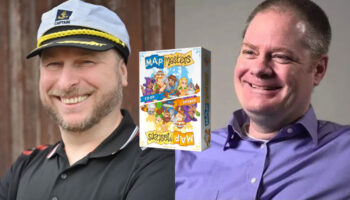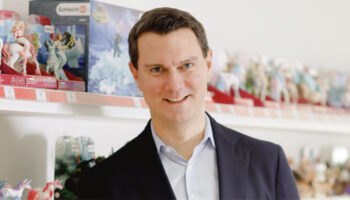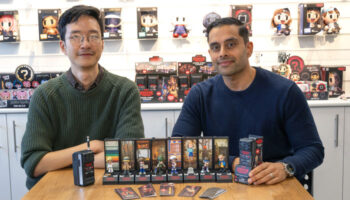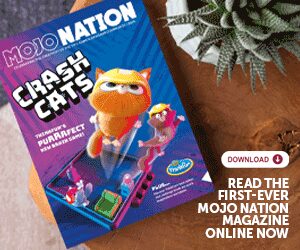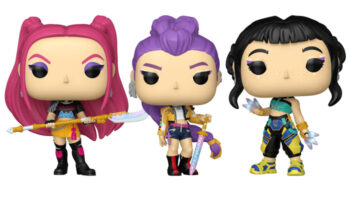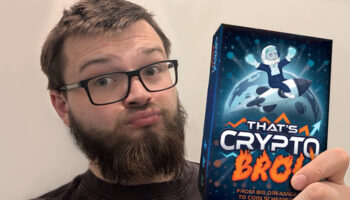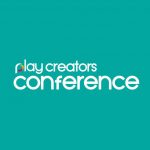Tycoon Games Founder Dan Yarrington reveals his thoughts on crowdfunding, values… And being brash
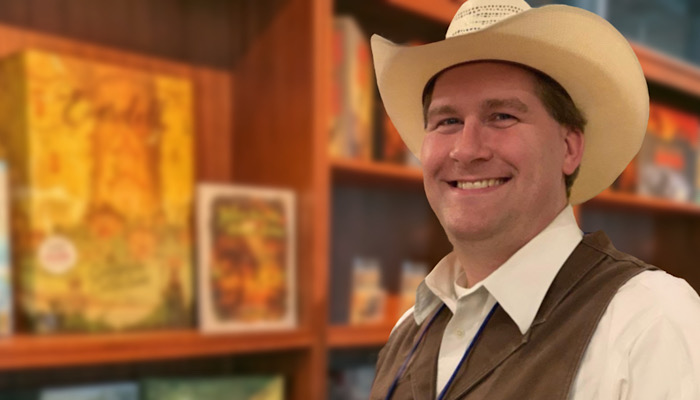
I loved the ‘About Us’ page on tycoongames.com, Dan. There, you describe yourself as a “a tabletop tycoon, a pinball tycoon, a father, a brother, a husband, a gamer, an adventurer, an explorer…” And, unfortunately, that intro’s all we’ve got time for…
Ha! Well, thanks for having me!
Let’s do a second piece! You’re also the CEO of Tycoon Games. What does Tycoon Games do?
What we do now is largely publish board games. We have a long history of doing lots of other things in the industry, though… Starting in retail and going all the way up through distribution and logistics. We started doing publishing back in about 2012.
And what kind of games, Dan?
We make Everdell; we make a whole bunch of other games including some licensed titles…. For example, we have a game based on the Princess Bride, which is my favourite movie. We also have Tycoon Arcade and Pinball Tycoon, where we buy, sell and trade pinball machines.
Inconceivable! What is it about The Princess Bride that you love?
I love the wit, I love the playfulness… I just love the whole movie! I’ve loved it for decades. Actually, we just took the family down to Boston Symphony Hall to watch a live performance. They showed the movie as the orchestra played the score. That’s probably the most we’ve ever spent watching The Princess Bride! But I have a soft spot for zany things: The Muppets, Mel Brooks… I love humour and absurdity; I like silly things. I like very resonant things, and I like meaningful things too.
Perfect. Tell me: how did you drift into publishing from retail?
I started in the industry in 1996. We did a lot of online and local sales, then we started doing conventions, events, tournaments – that sort of thing. In 2008 or 2009, we got into what was called ‘new media’ at that time: podcasts and YouTube and stuff. We did 300 or 400 podcast episodes of audio game-review shows, interviews, that sort of thing. Then we did a bunch of local store, co-op type work, eventually developing into distribution and logistics, doing production for other publishers…
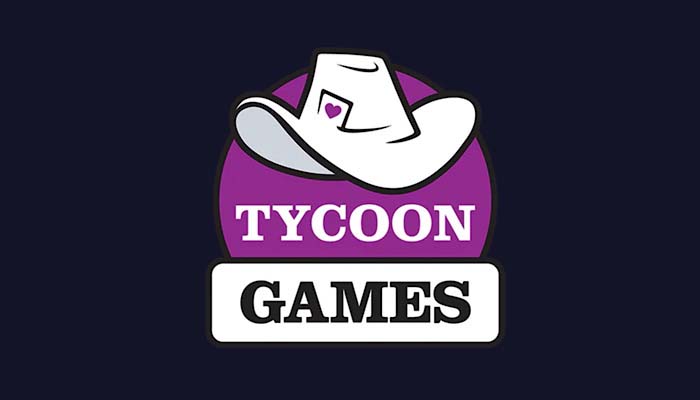
Basically, we ended up doing services for other people who made games. It kind of developed into publishing in this backwards way after people kept asking if we knew any factories that could do this or that. And we did, because we worked with factories and other publishers. Then people asked if we knew anybody that could do the art and so on! And we would adjust the percentages based on how much work we were doing…
So you were doing just about everything except the design?
The design and some of the development. Eventually, we just said, “Okay, I guess we could really be a publisher!” That was around Black Orchestra, which came out in 2013. I think we started it in 2011-2012.
And along with all that experience, I’m assuming you know that you’ve also earned the moniker of ‘The Kickstarter King’?
Well, there was certainly somebody that called me “The King of Kickstarter.” I thought: sure, I’ll take that. Why not?!
Why not? It’s good to be the king! You’ve now done 145 Kickstarters but, to me, crowdfunding looks like it’s changed quite dramatically over the years. Do you still do them?
We still do Kickstarters, yes. And you’re right – crowdfunding has changed. When we first started, it was soon after Kickstarter started; 2011-2012… Only we made a site called Springboard! Springboard was our own kind of Kickstarter platform idea that didn’t work when we may be raised $10,000. Then we ended up using kickstart for many years… We recently done some campaigns on Gamefound as well.
Were you confident when you first started Springboard?
Well, we built it on delusion, effectively! Springboard was basically a Shopify type platform. Obviously, we used BackerKit and Indiegogo, which just got acquired by Gamefound. But to your question about crowdfunding changing… You have to think about macroeconomics and the whole period in which crowdfunding was really on a tear. There was a period of rapid expansion and growth, economically speaking, from let’s say 2011 up through 2023. So people had a little extra money. They were also a little more willing to wait extra time…
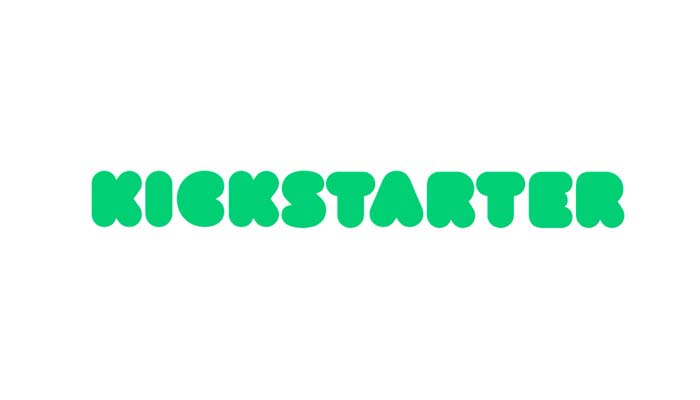
Just prior to the whole period where the pandemic impacted things, people had some failed campaigns; campaigns that went bankrupt basically: I’m thinking of The Doom That Came to Atlantic City, where Cryptozoic jumped in and bailed that out. We’ve seen it with Final Frontier, with Mythic Games; a lot of both purported and actual failures… People say things like, “CMON’s never going to deliver their campaigns!” And I’ll say, “Well, we don’t know that!”
There was some skepticism…
Right. Because, if you remember, Mythic was, in effect, like: “Yeah, we’re not going to deliver this campaign. Sorry.” And Final Frontier… “Actually, we’re not doing this.” I think that made a lot of consumers very wary. But the bigger impact, I think, is that people just don’t have as much spare money! During covid, people all over the world essentially borrowed money from their future selves. So now we’re all paying the bill for that – and the effect on crowdfunding is about a 50-60% reduced overall funding per campaign relative to what it would have done pre pandemic.
As much as that? That’s astonishing. So under what circumstances, Dan, would you choose to crowdfund a project?
For us, it’s more about crowd launching than crowdfunding. We’re fairly fortunate to be well capitalized now, so it’s less about getting funding… And more about engagement and launching into the market. Think about it this way: if you have a game, a good one with locked design, it takes about a year to do all the illustration, editing, quoting, tooling, production… All that stuff.
Come the launch, you’re somewhat taking a game on tour. So our crowd-launching campaigns come right in the middle of that. We’ve already fully designed the game because we want to be able to do what we call ‘snap campaigns’ – meaning we want to deliver them very quickly.
Can you give us an example of this, just for clarity?
I think Everdell: Silverfrost is a good example. There, we were basically counter programming against the concerns of people in the market… Are we going to deliver? Will it take a long time – two, three, four years? So we’re effectively saying: we always deliver and we’ll deliver in a fixed period. We launched it in January 2025 and said we’d deliver by the end of November. And we did: we started shipping in July and had, I believe, mostly finished shipping by the end of August. So for people that finished their pledge managers, we got all those backers out three or four months early, and within one year. Effectively, that’s a snap campaign.
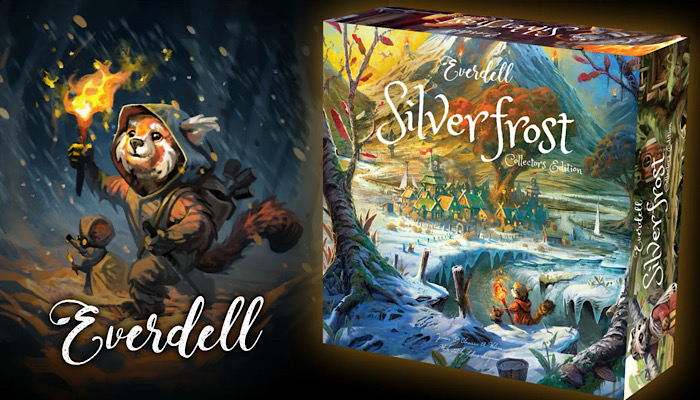
Once it launches, backers get the first copies, but then you go on the road, so to speak: all these conventions! That’s when you start showing off the game and launching it into wholesale and so on. That’s a real change from the regular structure that people have been used to – and I think that’s what people need. But I do think, for us, there’re certain games for which we just wouldn’t do a crowdfunding campaign. Kids games and family games come to mind because you’re not likely to raise enough money to make it worth the cost.
Why is that?
Because there’s a huge cost just in administrative time, staff time, customer service – all that stuff that goes with every campaign. This is where a lot of first-time funders and creators maybe can do it… Because they’re not paying anybody else to do it. If it’s going to be a relatively small funding number, then it’s usually not worth it for us. Now, if that’s the case, then we have to ask ourselves: why are we making this game?
Ha! Yes, good question!
Most party and kids games typically don’t, in the modern age, do well on crowdfunding. And it’s because they’re more impulse purchases. They’re smaller price points, and the relative cost of shipping is fairly high. Those might be better off in a wholesale channel because I can go to Target and pick it up and the imputed cost of shipping for that unit might be 75 cents or a dollar, as opposed to me having to ship it to you individually… And that can cost me nine or ten dollars.
Got it. People are less likely to give the money, but if they do give the money, it costs you more to get the product to them.
Right. And if it’s cost me nine or ten dollars to get it to you on a $25 game… Well, that’s a lot of the cost! So that’s some of the analysis that we do. I also tend to think of every campaign as part of an annual cycle. If we’re having an Everdell anniversary, for example, then we see that as an opportunity to engage, to talk about things, to get excited about this next thing. And typically, we start doing that just after we delivered the last stuff. So the cadence you want to set up is: ‘Hey! We delivered Silverfrost!’ Now, ‘Hey! There’s going to be something new soon…’
Which is a very smart way to market…
Right, because even though you don’t know what it is, you’re anticipating something! What’s next? What’s next? You want people thinking that. And then we’re filling in that gap, obviously, through our newsletter and social media and following us on Kickstarter and other stuff. But in every instance, for every product, you do have to make a product, you have to take it to market.
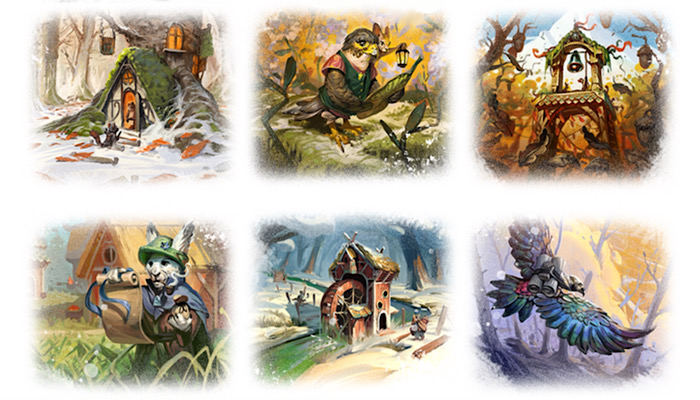
It does sound to me, though, Dan – and I’m inferring it from something you said earlier – that the funding here is secondary. So what are the other benefits of crowd launching?
Well… Think about this: we invest tens of thousands of dollars, maybe even a hundred thousand dollars in making a game. We do all the prep, illustrations, staff work and everything else to get it to the point where we can make it. It’s at the factory… But we still don’t know how much demand there is for that game! So that’s where crowd launching is very useful, because we get some idea: we can’t underprint and we don’t necessarily want to overprint… And we’re doing the same thing on the wholesale side.
So one benefit to us is that the launch campaign gets everybody excited about it. And then all your partners around the world, of which we have over 75 now, see it… I think of it as an interactive sell sheet with all the videos and testimonials and the rule books and the digital versions. They’re all just ways for people to interact with the game concept and the game itself before they have the physical object and make sure that we have the right amount of demand.
This is really insightful, Dan. Something else you have on your About Us page is a published set of values. One of these is ‘Care Deeply’…
Care Deeply, right. That can be being respectful of people internally and externally, which is sorely lacking in today’s short-attention economy and online interaction – and even in person a lot of times. But there’s also a challenge in that people aren’t giving of themselves.
Physically giving?
Yes. So one of the things we do to demonstrate that value is have all our sales benefit Toys for Tots. That’s an organisation here in the US that gives toys and games to kids and families who don’t have Christmas presents and so on. We also get pinball machines and put them into children’s hospitals and Ronald McDonald houses. I used to get games from Toys for Tots when I was a kid because, when we grew up, we had nothing. We got food from the food pantry and we got games from Toys for Tots. So I wouldn’t be in this industry today if I didn’t get games from Toys for Tots, this is our way of giving back. I believe everyone should be able to enjoy games.
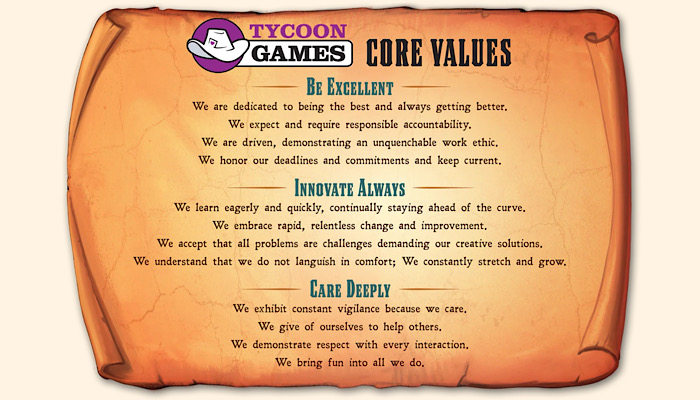
But we also care deeply about producing games. We make boxes that contain components and rules to have experiences that people are going to appreciate for the rest of their lives. You find the right game, you resonate with it, you share time with friends and family… These are the things you’re going to remember on your deathbed. These are the things that make our lives more meaningful… Now, I know they’re not on Maslow’s hierarchy of needs!
Ha! No, but psychologically…
They’re not food and shelter and water, but they’re right there in terms of socialisation and self-realisation, self-actualisation. These are all very positive things. Then, as a second part of this, we’re giving that experience to people that really can’t afford it. Because that gives the same experience to kids and families that don’t have the resources to buy these things. The way we view it, we don’t do anything essential because we’re in kind of a ‘frivolous’ industry.
Well, I would argue that you’re helping people to meet their psychological basic needs – and that’s far from frivolous. What are the other two values?
Be Excellent and Innovate Always. There’re summaries of these on our About Us page, as you said earlier, on tycoongames.com. But that’s what we isolated it down to.
Isolated it down to? I like that phrasing… Sometimes, when people put a mission statement on their website, it’s very obvious the marketing department decided what they were going to be!
Ha! Well, people sometimes ask, “When did you come up with your core values?” But if the values sincere, you don’t really come up with them. You discover them. You identify them. You unearth them, don’t you?
Absolutely. And it has to be that way for them to be authentic, and they have to be authentic for them to be useful.
Right, because you find out that’s why you’re doing what you’re doing. We sat down and wrote those out probably six to eight years ago. And that’s where we isolated them down to Be Excellent, Innovate Always and Care Deeply. Basically, we’re telling everybody we work with – internally and externally – that this is what we believe in. And if you don’t resonate with one of these things, if you’re like, “No, I just want to make money! I don’t care about giving kids gifts!” then fine: don’t work with us.
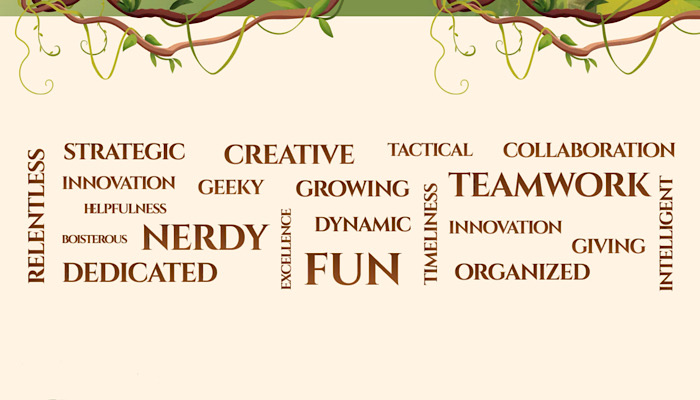
Well, that’s why I think authentic values on the website are really helpful: it gives staff, consumers and potential employees a North Star…
It’s important to us because we think we need to make things better. That’s part of our core. Not everybody has to vibe with everybody else. And that’s where I think you’re right: if you tighten it too much, or make things super non-offensive, it’s almost pre-apologetic. With our values, we’re telling you who we are and how we operate. We can be respectful about that, and you can decide whether you want to engage with us or not. If you don’t want to, that’s totally fine.
I’ll put a little link to the page in here. You also describe yourself – and it’s very direct – as brash, arrogant and demanding. You don’t come across as any of those things… What are you hiding?!
Ha! Well, there are a bunch of juxtapositions on that same page. I think what I’m doing there is suggesting that arrogance and confidence are two sides of the same coin. The difference between arrogance and confidence is whether you can do what you say you’re going to do. If you do what you said you were going to do, you’re confident. If you can’t do what you said you were doing, you’re arrogant, right?
I feel there’s an interpersonal dynamic as well. If you happen to like me, and agree with me, then you might find me persistent and determined. If you despise me, you’ll see the same qualities as pushy and stubborn.
But then, as an entrepreneur, as a kind of instigator you have to be unreasonably optimistic and unreasonably confident, I think… You have to believe you can do these big, hairy, audacious goals as they call them. Right? You have to believe it when you say, “We’re going to give millions of games to kids! We’re going to start a counter, and we’re going to keep adding to that.”
And actually, what’s sad to me is that people who told themselves they can’t do something probably can. They tell themselves they could probably never do something, and therefore they’re just not going to try. Whereas my mode is much more like, “No, I’m brash and arrogant and overconfident!” – all these different things. But also, those are two parts of the same thing. You can’t say, “Well, I really wish I could just have the jovial, gregarious part, but not the brash part.”
Yes, fair point.
At the end of the day – and apologies here to anybody I offend – I’m a human being. And human beings are imperfect; we make mistakes all the time. We see a lot of it on Instagram and all these different places, don’t we? It’s a common thing to do… People want to say they’re taller than they are, or stronger than they are, or more important than they are – whatever. But I don’t have any compunctions! I’m just who I am.
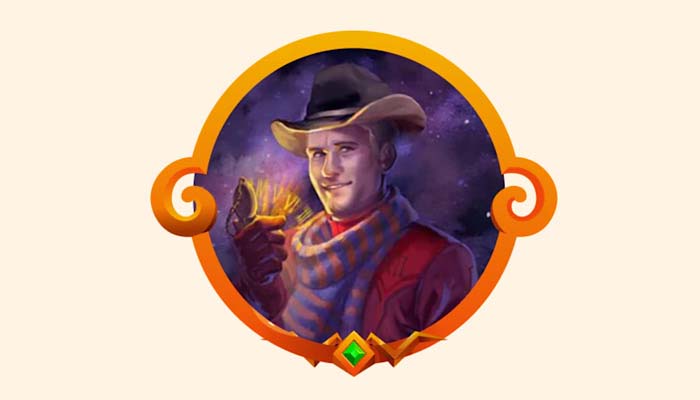
I could talk to you about values all day, Dan, but we need to start wrapping this up… Just before I do, what is it that keeps you creative?
Well, I do a decent amount of traveling – so just experiencing the world. My wife and I have been together for 22 years and we have three kids. They’re 15, 12 and nine now. So I just go about in the world. I watch movies, I read books, I play games, I go on walks. I do all kinds of stuff. And I could be doing something mundane like going to the grocery store, but my brain is set up – and this is a blessing and a curse – always to look for inefficiencies!
Little problems and things you don’t like?
Right. So I’ll wonder why they have – I don’t know; toothpaste in a particular type of tube, say! There are all kind of product- or user-related interfaces that set my mind to work. And that can be a challenge… Most people are oblivious to those things. Now, there are many ways in which I’m completely oblivious too! I’m a very focused person… So you can be literally standing next to me at a convention, say, and I could just be talking to somebody and not even notice you. I’m not ignoring you…
They all tell me that, Dan! Ha!
Ha! No, I literally won’t have seen you. It’s just the dual modes here. From a game perspective, we have a lot of research stuff that we do here. We’ll buy games and toys and decorations and all kinds of things because this is what leads to a lot of thinking. I’ll give you one example… We made Everdell blankets. Why? Because I hate blankets!
You hate blankets, did you say there?
Blankets, yes! Throws, we call them here in the US. I’m 6’2”, so I hate throws that I can’t cover my feet and my shoulders with…
Oh! Amen to that! I get so sick of having to curl up in the fetal position just to keep my feet under a cover!
Right?! So we made Everdell throws 80” tall so that I could put them literally over my whole body if I want to. And then I also made them maybe five-feet wide. These are for all sizes of people, or you can snuggle up with somebody – but that’s a functionality difference because the vast majority of throws are 60” long – which is not big enough!
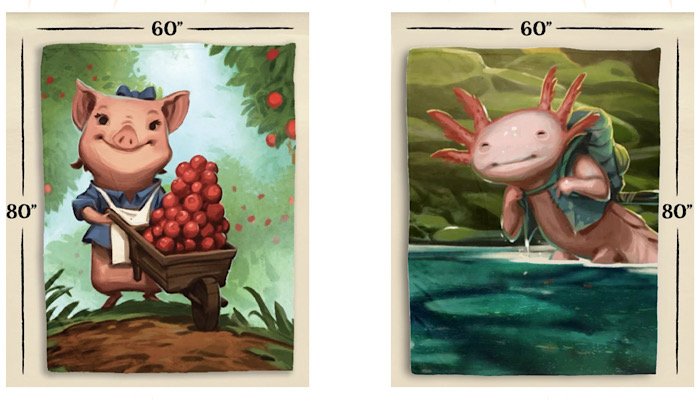
So that’s the kind of iterative thing that we look at and we say, “Oh, that’d be kind of cool. Could we do this? Should we do that?” And then you experiment. And so I don’t really have to try and keep creative. I’m just kind of a wellspring of creativity. I do keep a figments file where I record all my ideas and I classify them by hotness…
Hotness?
So I might think of an idea as a sparkle or a flicker. And then it might be a flame and then it might be an ember that’s dying out; then its coal because it’s extinguished. Ideas move through that threshold and, if they get to a flame, then they’re basically active. When it gets to the point that it’s a fire, you really have no choice but to work on it in some way… Even just sitting there and thinking about it. And then what you’re doing is iterating through it and asking yourself if you can realise it.
By way of example, I might be asking myself if I can make a deck-building game that also has drafting… Or if I can mix one thing with another. Because I like that a lot; that kind of mixing of elements and experiences. I’m very much a top-down designer from a product standpoint… I want to go, “What’s the experience I want you to have?” With the blankets, it was very simple: I want you to be able to put one over your feet AND over your shoulders.
Which shouldn’t be asking much!
Ha! No! And if it makes sense, we can design the product around that rather than figure we can sell you two blankets and you can put one over your feet and one over your shoulders. That’s one way to approach it! But then maybe you’re looking at it and, if you do the math, you find it costs $3 to make a 60” blanket and $7 to make an 80” blanket. So you’d be like, “Actually it’s more efficient to have two blankets.”
There’s a reality that you have to dive into once you run the creative spark through the reality engine. You have to make a bunch of decisions very rapidly about whether an idea’s going to work. In effect, what I do is serve as a predictive engine. Will people resonate when they interact with whatever you make?
They may not appreciate it at all, presumably?
Right! If you’re doing the job right, it might be that people just take for granted the problem that you solved. Some folks expect all their blankets are going to fit them! The extra size doesn’t matter; it’s just a cute, soft blanket to them. They still like it… They like the design, the softness, the material; they like that it’s cute. But occasionally somebody comes back and goes, “Oh man! I love those blankets! They actually fit me!” They’ve discovered the killer part that I was trying to create within these blankets.
Well, I really enjoyed chatting to you, Dan. I hope you’ll come back and do it again sometime. In the meanwhile, I’m going to buy myself one of these blankets!
–
To stay in the loop with the latest news, interviews and features from the world of toy and game design, sign up to our weekly newsletter here




